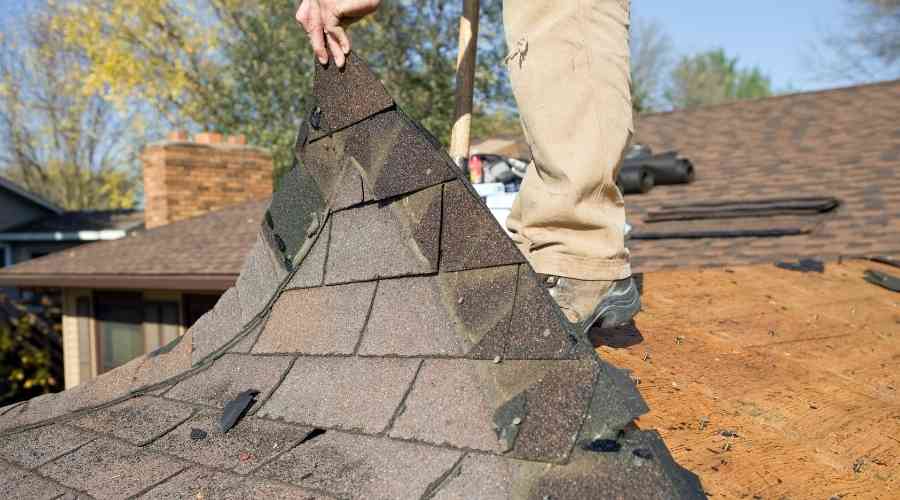Are you thinking about getting a new roof for your historic home or business in New Jersey? Before you start your project, you’ll need to figure out a few important things.
What kind of roof material is there already?
Did you know that not all roofing companies are trained to work with all types of roofing materials?
Before you hire a roofing contractor, you should find out what kind of material your historic home’s roof is made of. This is because old buildings have many different kinds of roofs, such as clay tiles, metal, slate, and wood shingles.
For each kind of roof, the roofing companies you’re thinking about will need to have specific skills and experience.
Clay Tiles
In the past, many cities on the East Coast used clay tiles because they didn’t catch fire. When deciding between roofing companies to fix or replace a clay roof, make sure the contractor carefully sources clay tiles.
If the clay tiles you buy aren’t of good quality, they may crack or flake more easily over time, which will cost you more money in repairs. Your NJ roofing team working on the replacement of your historic roof should also know that walking on a clay tile roof can break the tiles.
Metal
Over the centuries, architects have used zinc, copper, tin plate, teme plate, galvanized iron, and even lead in their designs. Even though metal roofing is beautiful and strong, acid rain, lichens and mosses, sheet metal fatigue, and airborne particles can all damage it over time. To protect the quality of your NJ historic roof, you need to hire a roofing company that only uses high-quality roofing materials.
The right roofing contractor should know that repairing or replacing this type of roof requires special care to make sure that stress points like seams are well supported. Also, you shouldn’t put some metals together because they are too different. If the contractor you hire puts the wrong metals together, something called “galvanic action” could happen to your roof. Galvanic action causes corrosion, which can lead to leaks that will need more repairs.
Slate
Chemicals in rainwater can cause erosion of slate roofs in New Jersey, especially around weak spots like nail holes. This happens a lot when the original roof of the building is made of soft slate. Another danger to think about? During and after winter storms, the ice breaks up.
If you need to replace or fix this type of roof, the roofer you hire should know what colors of slate were popular when the building was built, as well as how to install the slate correctly so it doesn’t break or chip.
Wood Shingles
A long time ago, wooden shingles were a popular and cheap way to cover a roof. Most building codes today don’t allow them because they could start a fire. If wooden shingles aren’t allowed by the building codes for homes and businesses in your area, your roofer will have to find a good replacement.
Cost is another great reason to choose a different kind of roof. Roof costs could go up over time if you use wood shingles because wood can break down over time and get damaged by light and rain.
The good news is that asphalt shingles and ceramic tiles can look and feel like wood. Your roofing contractor should think about what kinds of wood were most often used in your area when choosing the material that best looks like the old roof.
Are these common safety issues with old roofs present on yours?
Some of the materials and methods used to make historic roofs in New Jersey can make your home less safe. Before you start replacing or fixing your roof, you’ll want to know if any of these possible risks are present.
Lead
It’s important to know if your old roof poses any kind of health risk to people who work on it. For example, many buildings built before 1978 have lead flashing, which can be bent and lasts a long time. But when renovations disturb the flashing, lead particles can get into the air or be taken in through the skin, which could cause health problems.
Because of these things, if you think there may be lead in your roof, you should tell a roofing professional. Some people may need personal protective equipment (PPE) like masks and gloves. Also, lead-based building materials will need to be thrown away in a special way to protect the environment.
Asbestos
From the 1940s to the 1970s, asbestos was most often used as insulation. Historic homes that were fixed up around that time can also be dangerous. If you have the building plans, specifications, or any other kind of record for your old roof, these papers can help keep roofing company workers from getting exposed to asbestos and other dangerous chemicals by accident.
Structural Defects
Some of the beams that hold up old roofs in New Jersey are getting weaker with age or are too close together. Over time, this often makes the roof look bad, but it doesn’t always.
If you know that your old roof has structural flaws that aren’t visible, you should tell your roofing team. But giving the team access to any blueprints, building plans, or other records is another great way to help your roofing company figure out risks and stay safe.
Note: If the roof needs more support, your roofing contractor can use modern materials and tools to give the roof a look that is as close to the original as possible.
Who in NJ has the best service for replacing old roofs?
As a family-owned and -run business, Wayne NJ Roofing is proud to fix and restore the roofs of old buildings in the area. It’s a great honor to help our customers keep historical buildings in our community in good shape so that future generations can enjoy them.
During your free consultation, our certified team of roofing professionals will look at your roof in person to figure out if it needs a few small repairs or a full replacement. From there, we’ll think about the local building codes and, if necessary, talk to architects and historians.
Our goal is to come up with a roofing plan that stays as close as possible to the original building plan and uses the most historically accurate roofing materials we can find. We’ll talk to you, our most important team member, at every step of the way to make sure you’re happy with the end result. We’ll also write down everything we do so that it will be easy to do maintenance or repairs in the future.
Getting a new roof on a historic building can seem hard, but if you work with the right roofing contractor, the job is easy and satisfying. Call the roofing and siding experts you can trust when you need help with a historic roof in NJ.





